The Ultimate Cheese Guide: Elevate Your Pizza Game
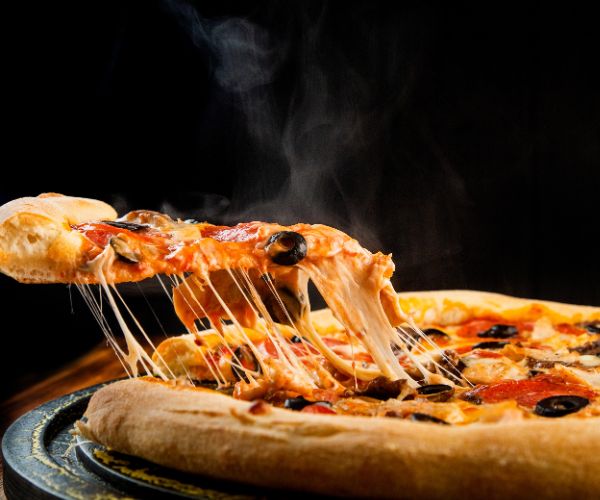
To craft the perfect pizza, choosing the right cheese can make all the difference. The type of cheese used can impact everything from flavor to texture to meltability. This ultimate guide will walk you through the best cheese options for pizza, ensuring that your homemade or restaurant-quality pizza reaches new heights.
Did you know that the type of cheese you choose can make or break your pizza experience? Whether you're a fan of classic mozzarella or are adventurous with other varieties like provolone or cheddar, this guide will help you understand the nuances of each type of cheese and how they can transform your pizza experience.
What Makes the Best Cheese for Pizza?

Exploring Different Types of Cheese for Pizza
The world of cheese offers a multitude of options for pizza enthusiasts. Cheeses like mozzarella, provolone, and cheddar each bring unique flavors and textures, enhancing the overall pizza experience:
- Mozzarella: Known for its supreme meltability, fresh mozzarella is a favorite for classic pizzas.
- Provolone: A semi-hard cheese with a distinct tangy flavor that contrasts beautifully with the richness of tomato sauce.
- Cheddar: Offers robust flavors and a satisfying melt, appealing to those looking to experiment beyond classic pizza paradigms.
Cheese Meltability and Its Impact on Pizza
Why Meltability Matters:
- Smooth, Creamy Texture: Evenly melted cheese ensures a seamless, delightful texture.
- Iconic Cheese Pull: Low-moisture mozzarella is the champion of meltability, creating that satisfying pull.
- Browning & Visual Appeal: Meltability influences how well cheese browns, enhancing the pizza's appearance and flavor.
Factors Influencing Meltability:
- Moisture Content:
- High Moisture: Fresh mozzarella provides a creamy melt.
- Low Moisture: Low-moisture mozzarella offers an elastic melt for golden browning.
- Fat Content: Cheeses with higher fat content, like fontina, melt more smoothly.
Choosing the Right Cheese:
- For a creamy melt: Fresh mozzarella
- For a golden brown finish: Low-moisture mozzarella
- For a smooth melt: Fontina
Understanding these nuances ensures a delicious pizza experience every time!
The Importance of Fat Content in Pizza Cheese
Higher fat content cheeses tend to melt more smoothly and evenly, creating a luscious layer of cheese atop the pizza crust. Mozzarella cheese, with its balanced fat content, strikes the perfect harmony between meltability and flavor, making it a popular choice for pizza recipes.
Semi-hard cheeses like provolone and cheddar also offer high-fat content, contributing to their rich, creamy textures and enhancing the overall taste profile of the pizza. Cheeses with varying fat contents can be incorporated into pizza making to achieve specific textures and flavors. For instance, goat cheese, which has a distinctive tang and creamy consistency, can add complexity to a pizza. Cheeses like fontina and jack cheese, known for their high-fat content, offer a melt that is both smooth and rich.
Incorporating a blend of cheeses with different fat percentages, such as mozzarella and provolone, can create a multi-dimensional flavor and texture profile, elevating your homemade pizza to a gourmet level.
Which Cheeses Are Ideal for Homemade Pizza?
Best Type of Cheese for Homemade Pizza
Mozzarella cheese stands out as the best type of cheese for homemade pizza due to its excellent meltability and mild flavor, which complements a wide range of toppings without overpowering them. Low-moisture mozzarella, in particular, is favored for its ability to create that desirable cheese pull and crispy, golden brown finish. For cheesier pizza recipes, combining mozzarella with semi-hard cheeses like provolone or cheddar can add depth and richness to the overall flavor.
Experimenting with different types of cheese can add a personal touch to your homemade pizza. While mozzarella is a staple, adding a sprinkle of parmesan cheese can elevate the flavor with its sharp, nutty notes. Using fontina cheese can introduce a robust buttery profile, while goat cheese brings a unique tang that can complement fresh ingredients.
Using Fresh Mozzarella for Pizza at Home
Fresh mozzarella is a beloved choice for homemade pizza due to its rich, creamy texture and exceptional meltability.
- Rich, Creamy Texture & Exceptional Meltability: Ideal for Neapolitan-style pizzas. Sliced and evenly distributed over dough.
- Flavor Pairing: Harmonizes with tomato sauce. Subtle flavors meld with other ingredients.
- Preparation Tip: Pat dry to prevent sogginess. Ensures a crispier crust and balanced texture.
- Enhancing the Eating Experience: Melts into a creamy, luscious blanket. Luxurious mouthfeel due to fat content.
- Flavor Maximization: Combine with other cheeses like parmesan. Drizzle olive oil on top before baking for added richness.
- Quality Highlight: Elevates overall pizza quality. Showcases the quality of ingredients used.
Why Low-Moisture Mozzarella is a Great Option
- Optimal Melting Properties: Melts evenly without becoming watery. Creates a perfect, stretchy cheese pull.
- Texture and Consistency: Firmer than fresh mozzarella. Maintains structure during baking.
- Reduced Moisture Content: Prevents sogginess. Contributes to a crispier crust.
- Flavor Profile: Slightly saltier and more concentrated. Enhances overall taste.
- Versatility: Ideal for various pizza styles (New York-style, deep-dish). Suitable for other dishes (lasagna, casseroles).
- Convenience: Longer shelf life than fresh mozzarella. Easy to shred and distribute.
- Cost-Effective: Generally more affordable. Widely available in grocery stores.
How Do Different Cheese Types Affect Pizza Flavor?

Cheese Types and Their Impact on Pizza Flavor
|
Cheese Type |
Flavor Profile |
Texture |
Melting Properties |
Best For |
|
Fresh Mozzarella |
Mild, creamy, slightly tangy |
Soft |
Melts into a luscious, creamy layer |
Neapolitan-style pizzas, Margherita pizza |
|
Low-Moisture Mozzarella |
Slightly saltier, more concentrated |
Firm |
Melts evenly, creating a stretchy cheese pull |
New York-style pizza, deep-dish pizza |
|
Parmesan |
Nutty, sharp, umami-rich |
Hard, granular |
Does not melt well |
Sprinkling on top after baking, adding depth to the flavor profile |
|
Provolone |
Mild to sharp, depending on age |
Semi-hard |
Melts well |
Blending with mozzarella for a richer flavor, Philly cheesesteak pizza |
|
Cheddar |
Sharp, tangy, varies with aging |
Semi-hard |
Melts well but can become oily |
Specialty pizzas like BBQ chicken, adding a sharp contrast |
|
Gorgonzola |
Strong, tangy, slightly sweet |
Soft, crumbly |
Melts into pockets of flavor |
Gourmet pizzas, paired with sweet ingredients like pears or figs |
|
Ricotta |
Mild, slightly sweet, creamy |
Soft |
Does not melt but becomes creamy |
White pizzas, dolloping on top for added creaminess |
|
Fontina |
Mild, nutty, slightly earthy |
Semi-soft |
Melts well |
Blending with other cheeses, adding a subtle nutty flavor |
|
Goat Cheese |
Tangy, earthy, slightly tart |
Soft, creamy |
Does not melt completely |
Gourmet pizzas, paired with vegetables like spinach or beets |
|
Asiago |
Sharp, nutty, varies with aging |
Hard |
Does not melt well |
Grating on top for added sharpness, blending with other cheeses |
Combining Cheeses
|
Combination |
Flavor Complexity |
Texture Balance |
Best For |
|
Mozzarella + Parmesan |
Balanced mild and sharp flavors |
Creamy melt with a sharp finish |
Classic pizzas, enhancing overall flavor |
|
Mozzarella + Provolone |
Rich, layered flavor |
Smooth, even melt |
New York-style pizza, adding depth |
|
Cheddar + Mozzarella |
Sharp and creamy contrast |
Stretchy with a sharp bite |
Specialty pizzas, BBQ chicken pizza |
|
Gorgonzola + Mozzarella |
Strong and mild balance |
Creamy with pockets of intense flavor |
Gourmet pizzas, pairing with sweet or savory toppings |
|
Ricotta + Mozzarella |
Mild and creamy combination |
Creamy with a luscious melt |
White pizzas, adding extra creaminess |
|
Fontina + Mozzarella |
Nutty and mild blend |
Smooth, even melt |
Blending for a subtle nutty flavor |
|
Goat Cheese + Mozzarella |
Tangy and creamy mix |
Creamy with a slight tang |
Gourmet pizzas, pairing with vegetables |
|
Asiago + Mozzarella |
Sharp and mild combination |
Creamy with a sharp finish |
Adding sharpness and depth to the flavor profile |
Step-by-step Guide for Making the Perfect Cheese Pizza at Home

Ingredients
- 1 prepared pizza dough (homemade or store-bought)
- 1/3 cup pizza sauce
- 1 cup shredded low-moisture mozzarella cheese
- 1/2 cup shredded provolone cheese
- 1/4 cup grated parmesan cheese
- Dried basil or Italian seasoning to taste
Instructions
- Place a pizza stone or inverted baking sheet on the lower third rack of your oven. Preheat to 475°F (246°C) for at least 30-60 minutes so the stone gets very hot.
- Stretch the pizza dough into a 12-inch circle on a lightly floured surface. Transfer to a pizza peel or another inverted baking sheet lined with parchment paper.
- Spread the pizza sauce evenly over the dough, leaving a 1-inch border for the crust.
- In a bowl, toss together the shredded mozzarella, provolone, and parmesan cheese. Sprinkle the cheese blend over the sauced dough.
- Slide the pizza from the peel onto the preheated stone in the oven. Bake for 12-14 minutes, until the crust is browned and the cheese is bubbling with some golden spots.
- Remove the pizza from the oven and let cool for a few minutes before slicing and serving. Sprinkle with dried basil or Italian seasoning if desired.
Tips for the Perfect Cheese Pizza
- Use a blend of mozzarella and bolder cheeses like provolone, cheddar, or parmesan for a more complex flavor. Low-moisture mozzarella is best for even melting and browning.
- Shred the cheeses yourself for better melting than pre-shredded bags. Pile the cheese in a line across the center of the pizza for an optimal cheese pull.
- Bake the pizza on a preheated stone for at least 12-14 minutes to get the cheese melted and the crust crispy. Let cool slightly before slicing so the cheese sets a bit.
- For the cheesiest slice, cut the pizza so your knife scores the cheese pull line you created. Slowly pull apart for maximum cheese stretch.
With quality ingredients and proper technique, you can rival your favorite pizzeria's classic cheese pizza in your own kitchen. The key is getting the crust crispy, the cheese melty and browned, and timing the cooldown just right for an Instagram-worthy cheese pull.
Tips for Choosing the Right Cheese for Different Pizza Styles
Best Cheese for Traditional Italian Pizza
- Mozzarella: The classic choice, especially fresh mozzarella made from buffalo milk (mozzarella di bufala). It has a mild, milky flavor and excellent melting properties.
- Provolone: Often used in combination with mozzarella for a slightly sharper flavor.
- Parmesan: Adds a salty, umami boost when grated on top. Best used as a finishing cheese rather than a primary topping.
Choosing Cheese for Neapolitan Style Pizza
- Fresh Mozzarella (Fior di Latte or Buffalo Mozzarella): High-moisture cheeses that melt beautifully without browning too much in the hot wood-fired ovens used for this style.
- Parmesan or Pecorino Romano: Lightly grated on top for a salty finish.
Ideal Cheese Options for New York Style Pizza
- Low-Moisture Mozzarella: Aged mozzarella browns nicely in the slower bake required for the thicker crust.
- Cheese Blends: Many NY pizzerias use a blend of whole milk and part-skim-aged mozzarella for the ideal melt and color.
- Provolone and Cheddar: Popular additions to mozzarella for more flavor complexity.
By understanding the characteristics of different cheeses and how they impact your pizza, you can create a delicious and visually appealing pizza that will impress your family and friends. Happy pizza making!


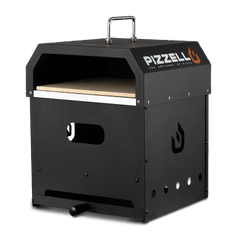
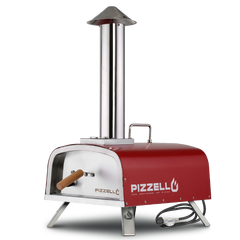
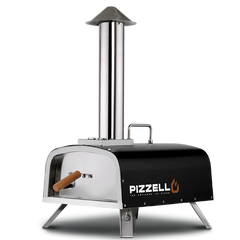
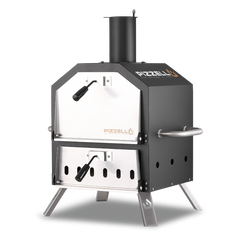



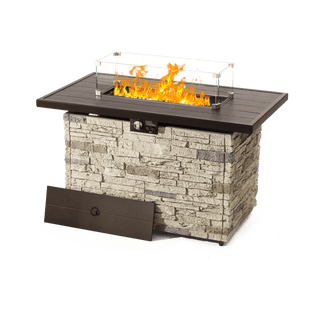
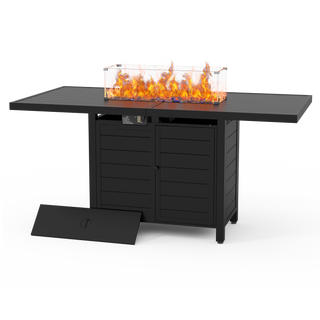
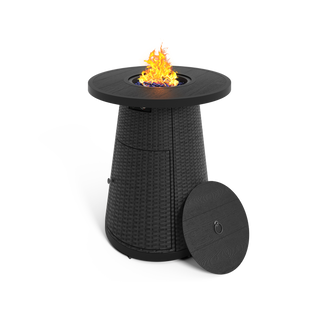

 Aluminum Dining Table
Aluminum Dining Table
 WPC Dining Table
WPC Dining Table
 HDPE Dining Table
HDPE Dining Table
 Cart
Cart
 Gas Burner
Gas Burner
 Hat
Hat
 Apron
Apron
 Swivel Rocker Set
Swivel Rocker Set
 Textilene Chairs
Textilene Chairs
 HDPE Chairs
HDPE Chairs
 Wicker Counter Height Barstools
Wicker Counter Height Barstools
 Metal Counter Height Barstools
Metal Counter Height Barstools


























